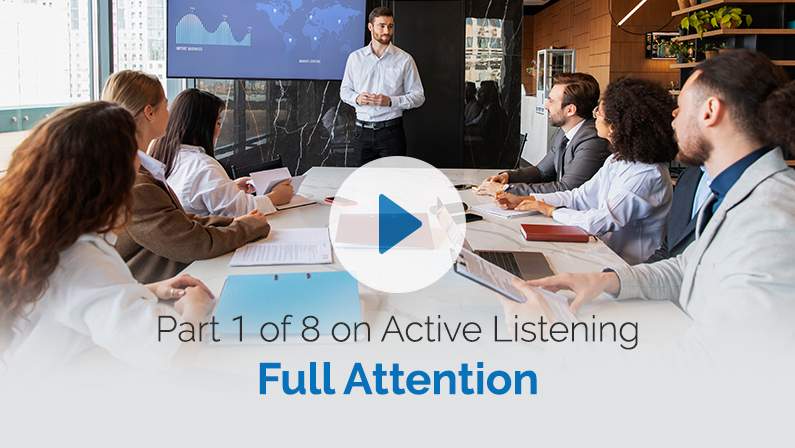Hi everyone, Scott Munden here from the Huntleigh group.
Welcome to part one of our eight part series of shorts on active listening.
We had gotten some feedback from our previous posts related to active listening, so we decided to do a little bit more of a deep dive.
We broke it into eight parts, eight different areas of active listening, so that we could post them here.
In short, at the end we’ll go end to end and post these as a compilation huntleigh.com search video or on our YouTube channel.
But our topic for today is called full attention.
And in the introduction to this series, I talked about creating space between the action and the reaction relative to communications. What that means is really giving someone your full attention.
I think we probably all know people that are able to immediately immerse themselves in a conversation and you get that sense that they’re tuned in, they’re dialed into what you’re saying, and they’re absorbing everything. Not all of us, at least me, don’t have that ability. So I have to practice some techniques in order to give my full attention.
The first one is just the contact, if it’s appropriate, making eye contact, observing the body language. As we all know, 80% of those of the message comes in nonverbal cues. So if I’m giving you my full attention, absorbing everything that you’re telling me by observing you,
I’m going to get a better chunk of that message. What you’re really trying to tell me, the other part is clearing the clutter or clearing the distractions. What I mean by that, again, back to creating the space is really not letting your mind run.
If you were just in a meeting, or if you were working on something and someone’s communicating with you, pause. Give them your full attention. But in your mind, don’t be thinking about what you just left or don’t be.
More importantly, don’t be trying to formulate your response. Absorb everything they’re saying to you. Create that space for yourself so that you truly are understanding what they’re saying to you, and then you can provide a response if it’s even necessary. So that’s what we mean by full attention.
And let me put up the graphic just so you have the full description.
So that’s part one of eight in our series on active listening Full attention.
Hopefully that was useful for you. I’ll look forward to delivering the other seven in the series of shorts. Thanks for your time. We’ll see you soon.





